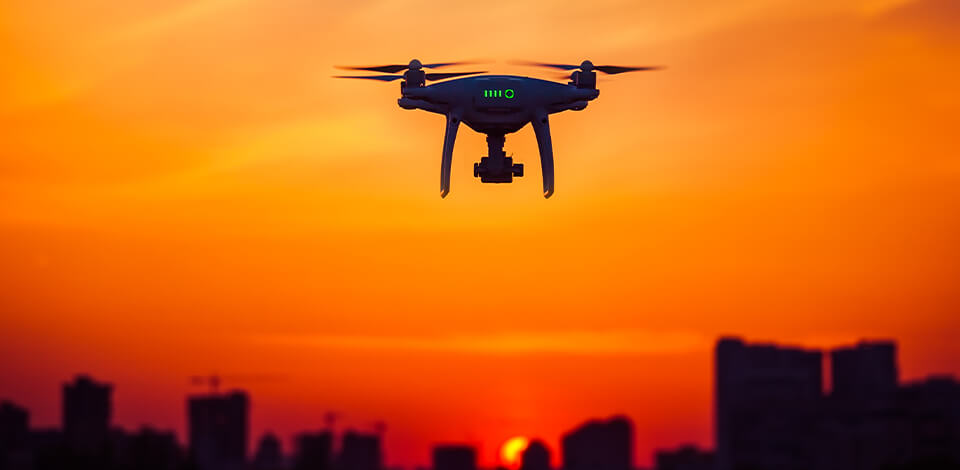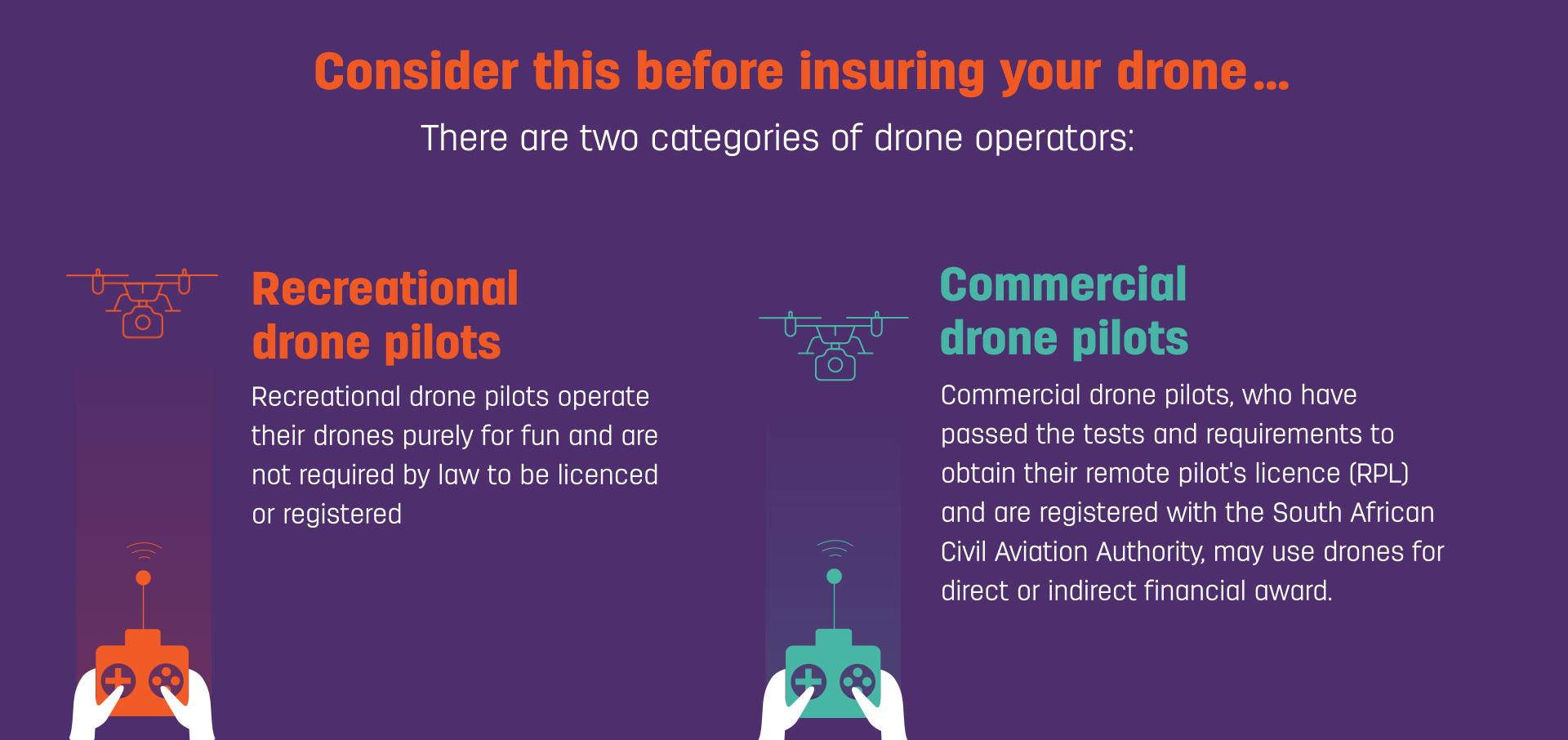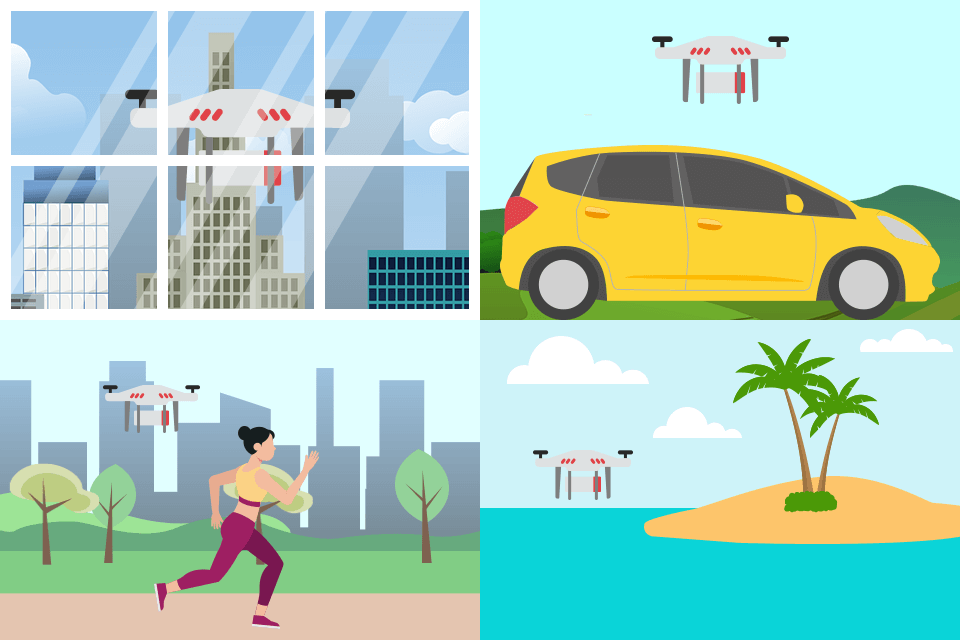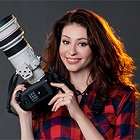Drone Insurance Guide in 2025 for Beginners

Find the best insurance for your first drone.
Bought the first drone and are interested in drone insurance? It is a relatively new formal conception. This investment will pay off many times over and secure you from unexpected financial and other dangers.
Drone Insurance 2025: FAQ
Look through the rules, restrictions and publications related to flying drones:
- The FAA's New Drone Rules
- Unmanned Aircraft Systems (UAS)
- FAADroneZone
- Airspace Restrictions
- Know Before You Fly
Unmanned aerial vehicle (UAV) ‒ fast-developing technology featuring high economic and commercial potential. However, the development of drone technologies has led to the appearance of new and poorly known potential risks.
As a result, the idea of UAV insurance appeared: huge insurance companies joined various organizations and groups, created to assist drone owners to fly safely. Today, you may approach a large provider of insurance services and buy, for example, state farm drone insurance, or one of the specific specialists engaged in insurance for drones.
1. Do I Need Drone Insurance?
Insurance for drones is not an obligatory requirement of the federal law. That is why you should understand the degree of the necessity to have long-term hobby drone insurance. As a rule, it doesn’t cover the usage of the indoor drone or standard maintenance of the FPV drone (racing). Insurance policies have exceptions regarding competitions or races.
However, because of the camera and equipment for video recording, using drones is quite an expensive hobby. Buying UAV insurance is a reasonable step that may save you a lump sum of money in case of an emergency. For instance, your drone may injure other people or damage property.

If you decide to get drone business insurance, it will help attract clients. The reason is that it will increase the level of confidence and demonstrate a professional approach. In some cases, you may need a minimal level of insurance coverage to implement a project.
It may be a permit for filming or cooperation with a big company that requires its providers to have insurance. Some companies will insure you only if you are a professional pilot. The majority of professional UAV pilots have a drone liability insurance and drone pilot insurance.
2. What Kinds of Risks Will I Face?
Federal Aviation Administration (FAA) defines a drone as a type of plane. Accordingly, drones are subjected to all exceptions and any risks of air vehicles and manned planes.

That is why, apart from personal injury, property damage and breach of confidentiality, one may speak of many exotic risks, threats and types of liability, such as fire, contractual and legal liability, aviation and production medical payments, etc. Let’s consider some types of risks that are qualified as insurance events.
Liability risks. In the process of tightening of the industry regulation, the potential for the expensive liability claims rises. Claims may be made against manufacturers (product quality), enterprises and operators for the property or physical damage, financial losses that occurred due to daily drone operations.
Cybersecurity. Cybercriminals may take control over a flying drone and bump it into some other object. It may lead to financial losses or even loss of lives. The hacker attacks when criminals try to hijack Wi-Fi or radio signal may be a serious problem.
Sensitive data recorded by UAVs may be illegally captured during the flight when a drone is transmitting the info back to the control station. As soon as this data is saved, it may be also compromised by cyber-attacks.
Privacy issues. One of the most serious problems that people face due to drone appearance is the potential breach of privacy and confidentiality. The majority of people and private owners believe that quadcopters shouldn’t fly over residential areas. The possibility of serious legal claims regarding privacy remains an urgent problem.
Regulatory requirements. Unlike the rules regarding manned air vehicles that have been developing for more than a century, UAV regulations are not perfect yet. The legislative basis around unmanned aerial vehicles is changing fast and may be additionally amended soon. Moreover, technology is developing faster than the regulatory process is.
International operations. Many companies carry out filming, researches and surveys on the territories that are outside the scope of the FAA regulations. These companies should make sure that their drone insurance covers foreign operations.
The potential risks, threats and accidents described above to some extent are covered by particular types of insurance.
3. What Are the Reasons to Buy Drone Insurance?
As you see, not everyone needs drone insurance. If you buy a basic quadcopter for amateurs or any beginner drone and use it in your backyard, you don’t need expensive insurance. As a rule, the cost of repair of a racing drone is smaller than an insurance fee.
 Download SkyWatch.AI Drone Insurance Free on iOS and Android
Download SkyWatch.AI Drone Insurance Free on iOS and Android
However, professional UAV pilots should definitely consider getting insurance. Look through the main reasons why you may need it.
Protection against financial losses. A drone has many sensitive parts. Cardan and camera are particularly vulnerable to damage. The more expensive the drone and camera are, the more expensive the repair is. Drone crash insurance may save your money on repairs or changes if your drone has a devastating impact on the object or surface.
If you have a medium-class drone and you are not eager to insure it, you may check whether your manufacturer offers repair services with the discount.
DJI, for example, may repair a DJI quadcopter at a lower price than you pay if you approach a repair service from the outside.
Some manufacturers also offer damage coverage plans when you pay a particular sum at once or buy monthly drone insurance. They promise to cover the expenses for repairs or changes up to a specified sum.
Liability protection. Flying a drone may be risky when it comes to other people and their property. A quadcopter moving at high speed with rotating screws may injure the eyes or the tip of the nose.
If, for some reason, you lose control, it strikes a blow against a face or hits the head, then you may be held liable and have to cover medical expenses. The same is when you bump into somebody’s house or a car.
What if a claim is made against you for an invasion of privacy or a flight over restricted airspace? Drone liability insurance solves all these problems ensuring that you will not go bankrupt only because of a mistake made.
Contractual requirements. If you use your UAV for commercial purposes, you may need commercial drone insurance to work with some clients. Some companies may require that the drone subcontractors have liability insurance to ensure compensation in case of injury or damage. If you have such a clause in your contract ‒ the only option you have is to get insurance.
One of the benefits of drone liability insurance in case you use your UAV for commercial purposes is clients’ confidence. It is particularly useful for operators working on a contractual basis. Having insured your drone, don’t forget to include it in your project and offers.
If you are a beginner in drone photography, you absolutely need to get professional legal aid in the process of concluding contracts to protect yourself from various problems.
Local laws. In the USA, although the Federal Law doesn’t require insurance for entertainment or commercial unmanned aerial vehicles, the local government or authorities may require you to get necessary insurance for particular types of activities, such as professional film production or city mapping. Therefore, check the requirements of the local laws especially if you fly your drone in public places or with commercial purposes.
4. What Types of Drone Insurance Coverage Will I Get?
Typically, photographers need liability and hull insurance for drones because they are the two main types to cover the most common situations. Certain tasks might require coverage of additional situations. Let’s look deeper into each type.
1. Drone liability insurance. Probably the most important compensation plan that drone owners are advised to get prior to any other. The plan protects you from various claims third parties might evoke. In most cases, pilots cause damage by crashing the device into a movable or immovable property, or even living beings, and have to pay for the repair or medications.
The compensation plan might have degrees, so read carefully whether it protects from cases of negligence or privacy as well.
Commercial drone insurance exists for protecting companies from similar trouble of causing damage or injury to third parties. Such a policy will take care of privacy claims as well.
There is also an option of on-demand liability insurance, for example, check Skywatch drone insurance. To find out what does Verifly cover, visit the Thimble website, where instead of buying drone insurance all year round, you only pay for every hour when needed.
2. Hull insurance. This policy, instead, aims at covering the damage that your device accidentally experiences. If you smashed the drone into a tree, you will receive money for fixing the damage or buying a replacement. Normally, you would combine the two policies for full protection.
Be aware that full coverage might be a separate kind of offer. The camera could be referred to as onboard equipment and be out of the compensation package. The drone insurance cost would be increased for more expensive devices. Also, don’t forget that when the company considers the insured value, they might decrease it if there has been inflation or the device has been depreciated.
In case you’re using a DJI camera, the manufacturer company also offers insurance policies of its own. Presently, you can select between such DJI drone insurance plans:
- DJI Care Refresh – offers a pretty basic compensation for the hull, gimbal, or camera, which has suffered some kind of damage. The number of repairs is only restricted by the total coverage of the drone insurance and anything that exceeds it is your liability. Those people who stay in the region of purchase, have an additional perk, like the DJI Care Refresh Mavic 2, because in that case they’re spared the delivery cost. There will be no damage assessment procedure or bidding, you are simply expected to send the device off and the DJI service will mail the replacement afterward.
- DJI Care Refresh + offers up to two removable devices in one year and covers additional types of accidents like damage by water or a collision.
Searching for a hull compensation for another professional drone system, don’t hesitate to ask the manufacturer directly. Otherwise, consult with any of the brokers mentioned later in this guide, like the State Farm drone insurance.
Payload insurance. If you want to fully protect all your working gear, you need a separate insurance package. In most companies, you will find it under the name “payload insurance” but sometimes other words can be used.
Regarding the type of work you do, the drone might be carrying a built-in gimbal camera, or various infrared, thermal, or multispectral cameras, or even a sensor. Payload insurance for drones makes sure the attached device is as secure as the quadrocopter that carries it. You can get everything fixed after a minor accident or replaced in case of a serious crash.
Ground equipment insurance. If your services are high-rank, you probably use more devices than just a drone – a laptop, a remote control, or another piece, and those can be put under protection as well. If that is relevant to you, data protection can also be included by certain companies. This type of insurance is popular among commercial pilots, who frequently use integrated and attached gear to handle various tasks.
Insurance for non-owners. To protect your personal belongings, you would need to have several of the above-mentioned policies. But what do you do if the gear is rented for a day? The civil liability UAV insurance was created to help the non-owners in case they receive third party claims in connection with the damage caused by a rented drone. The conditions like coverage and deductibles with this kind of compensation will be standard.
Keep in mind that this coverage only deals with the damage caused to the unrelated property or a person. In other terms, the repair or replacement of the gear is still on you. Many rental agencies require you to take up such insurance.
Same as the regular one, the cost of the policy for hired gear would depend on the value of the hired devices themselves. Often, some companies require this type of insurance before they can give you the gear. Specify whether all the items are included in the compensation.
How to Choose Drone Insurance?
Most insurance policies see your drone as a hobby or personal property, which reduces additional insurance. If you’re worried about theft, specify with your home insurer whether this item is counted in as your property before you take out any additional plan.
Before looking for the best drone insurance, consider what you’re using the device for and where you typically do it. Obviously, it won’t be worth to pay for a drone damage insurance when the device was purchased for less than $200, but liability insurance, instead, might be a very reasonable expense if you navigate around the neighborhood.
When professionals consider the same issue, with expensive equipment that fulfills important tasks, incidental damage should really be included in the policy. Furthermore, progressive drone insurance could save you if anyone steals the equipment.
The basic liability limit is normally $500,000 in commercial insurance, but increasing it to a million won’t add much to the general cost but would save you from many more troubles that could easily appear in case of a lawsuit.



